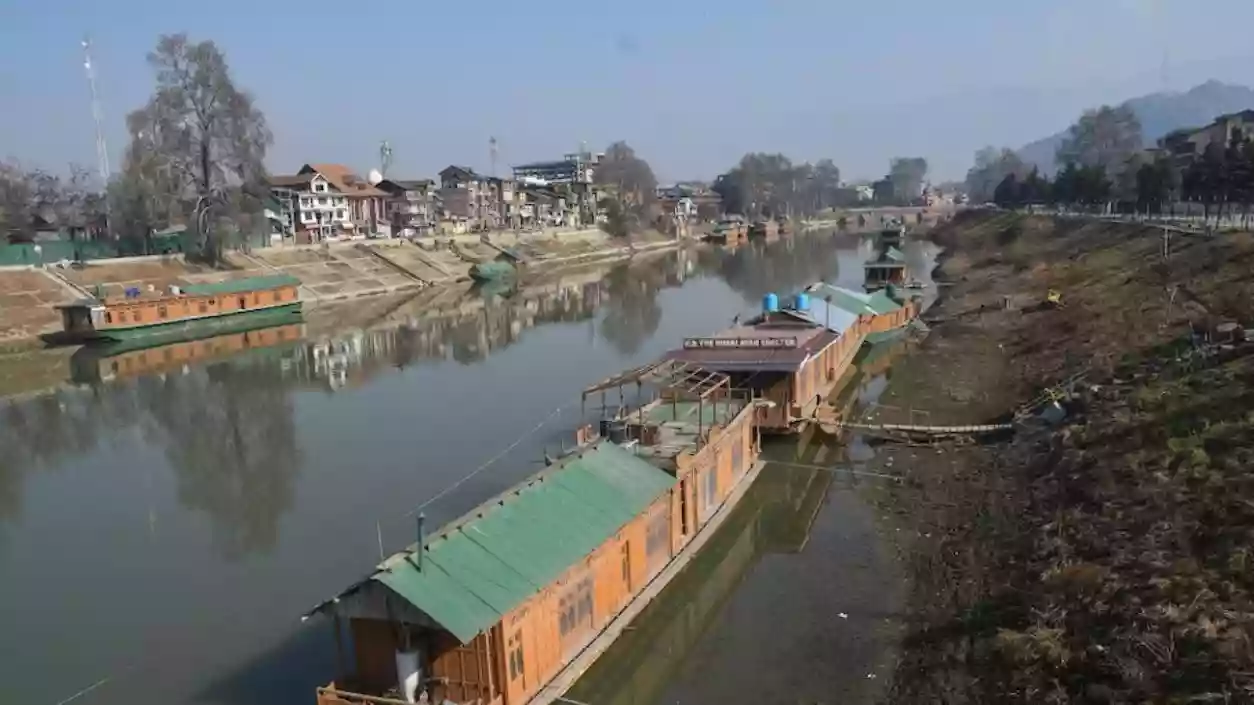.gif)
.gif)

Jammu and Kashmir is facing a severe water crisis as an 80% rainfall deficit has caused rivers, lakes, and springs to dry up. The Jhelum River is flowing at historically low levels, with Sangam measuring just 0.99 feet, affecting water supply in north and south Kashmir. Several major springs, including Achabal in Anantnag and Bulbul in Pulwama, have nearly dried up, disrupting water access for dozens of villages. "We used to get six lakh gallons of water from this spring, but now we barely get one lakh gallons—not enough to meet the needs of the residents," said a Jal Shakti Department employee.
The crisis has severely impacted hydropower generation, which has fallen by over 80% due to reduced river discharge. Plants such as Uri-I, Salal, and Baglihar-I are operating at a fraction of their installed capacity. Official data shows that power generation from central sector plants stands at 432 MW, while state sector plants contribute only 174 MW. "Reduced water levels have led to a 60% drop in hydropower output. Key projects like Baglihar and Salal have seen their generation halved," an official said. Authorities are purchasing additional power to meet demand, with the current supply reaching 2300 MW out of the required 3000 MW.
The impact of the crisis extends to tourism and agriculture. A 79% decline in precipitation in January, followed by even lower levels in February, has left ski slopes in Gulmarg barren, forcing the postponement of the Khelo India Winter Games. Farmers and horticulturists are also raising concerns over irrigation shortages, with experts warning that prolonged dry conditions could significantly affect crops. "If this dry spell continues, we are staring at an acute crisis," a Met Department official stated, cautioning that insufficient snowfall will impact water reserves for the coming months.
Unregulated sand mining in the Jhelum River has exacerbated the problem, with excessive extraction altering the river’s flow. A Jal Shakti Department official warned that deep craters created by sand mining trap water, reducing downstream availability. "The unregulated extraction of sand, particularly using heavy machinery, has led to large craters in some areas, which retain huge amounts of water. Excessive mining has also created unnatural barriers, disrupting the river’s movement," the official explained.
Infrastructure challenges have added to the crisis, with leaks in supply lines and the absence of a rationing plan affecting water distribution. Officials have announced a 30-hour shutdown of the Sindh Power Canal HEP Old Ganderbal from February 22 to 23 for desilting and repairs, impacting water supply to treatment plants at Nishat, Alusteng, and Rangil, which serve large parts of Srinagar. The Jal Shakti Department has deployed water tankers to affected areas but urged residents to conserve water. "The water supply has been affected, but we are deploying water tankers to meet the demand in areas facing acute shortages," said Chief Engineer Braham Jyoti Sharma.
Chief Minister Omar Abdullah acknowledged the worsening crisis, stating that it has been building up for years. "J&K is staring at a water crisis this year. It is not a recent phenomenon; it has been building up for a few years now," he said. Abdullah emphasized the need for public cooperation in conservation efforts and announced plans to review the Jal Shakti Department’s response. Experts have urged the revival of traditional water conservation methods, afforestation, and improved urban planning to mitigate future shortages, warning that continued environmental neglect could make water scarcity a recurring crisis.